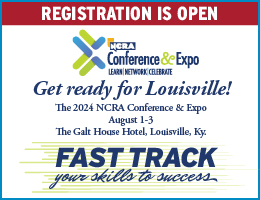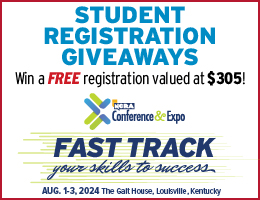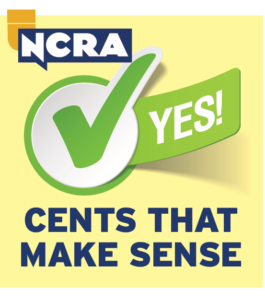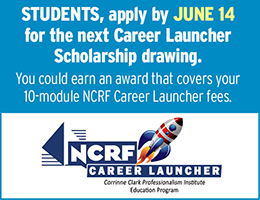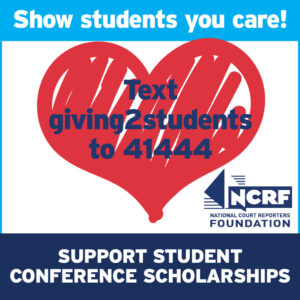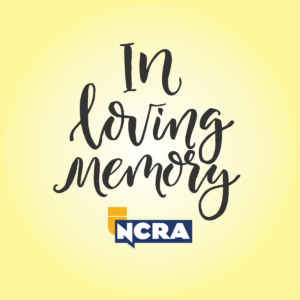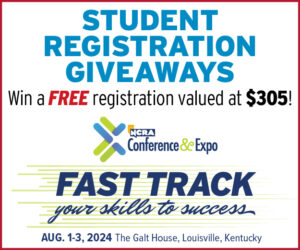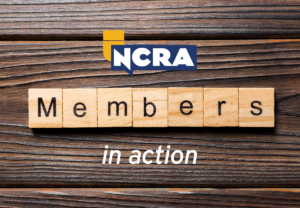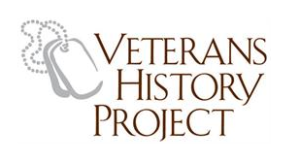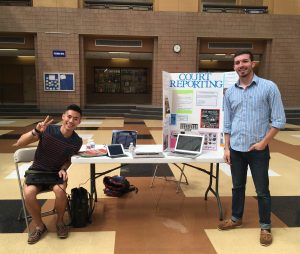
Isaiah Roberts, an official reporter working for the judicial circuit court in Illinois, was asked by his cousin, a director at Oswego East High School in the Chicago suburbs, to come and talk about his job. He invited his friend, Stanley Sakai, CRC, a captioner based in New York City, who was going to be in town, to join him for the presentation. The duo shared their similar skills and different paths with the high school students during their visit, and they garnered a lot of attention from the students, with several staying afterwards to ask questions of the two young men. The JCR asked them to tell us more about their experience.
JCR | How did the presentation go?
IR | When we got there, Stanley and I both set up our Lightspeed writers and laptops so the students could get a closer look at our machines. As I would talk with the students and answer their questions, Stanley would write everything that was being said, thereby showing the students firsthand exactly how realtime writing worked. This was one of the biggest highlights in our presentations, as the students were amazed to see every word they were speaking show up wirelessly on an iPad.
SS | Since Isaiah is a courthouse official and I am a captioner, I thought that, together, we would make a great team in that the students would have exemplars of two contrasting stenographic professionals.
JCR | What was the message you delivered to the students?
IR | We were able to explain the differences between someone who is a court reporter, such as myself, and someone is a CART captioner like Stanley. We were fortunate in this regard to be able to show some of the vastly different career options that were possible by being a stenographer. While some students liked the idea of being in a courtroom every day, some were intrigued by the fact that they could be paid to caption a sports game or that they didn’t have to have an 8-5 schedule.
SS |We made it clear to the students that an investment in a stenographic career is one of great prospects and flexibility. Whether it is the predictable stability of a 9-5 or the fast-paced hustle of the freelance life you desire, you can make this career path fit your needs and schedule.
JCR |Why was it important for you to make this visit?
SS | It is important for us to reach out and spread the word about this career because of the public’s general lack of awareness around the court reporting and captioning fields. As a captioner who works in many different capacities, I can attest that most people have no idea what I mean when I say I produce live captioning for tech conferences or provide CART for students. I frequently get confused looks by onlookers when I explain to them that practically none of what I am doing is automated when I inevitably get my favorite on-the-job question: “What speech/voice recognition software are you using? It’s so good!”
There is widespread misunderstanding regarding the value, long-term viability, and the earning potential of stenographic professions, so it’s imperative that we, especially as younger representatives in an aging field, do all that we can to educate and inspire those who will be soon choosing their career paths.
JCR |What were some of the questions/comments students had for you?
SS |The questions we got ran the gamut from typical salary ranges, to hours worked per week, to working conditions. We were surprised at how genuinely curious the students were at such a young age!
IR | A lot of the questions we received were questions such as, “How much schooling does it take?” or “How are you possibly able to write that fast?” Stanley and I both shared our own personal experiences, expressing that while the learning process is difficult, the career is well worth it.
I brought with me some promotional items and pamphlets from the current court reporting programs offered in Illinois. While many of the students seemed interested, there were multiple students who talked to us afterwards expressing that they think it might be a great career option for them.
JCR |What do you think the students gained from you visit?
SS | I think the greatest benefit the students gained from our visit other than hearing from two different professionals was witnessing the live demo. As Isaiah spoke, I transcribed him in realtime, sending the text to an iPad. We also let the students try out our machines. The “wow factor” of watching Isaiah’s words appear on the screen and the tactile aspect of touching our equipment really helped spark their interest and demonstrate our work in a concrete way.
